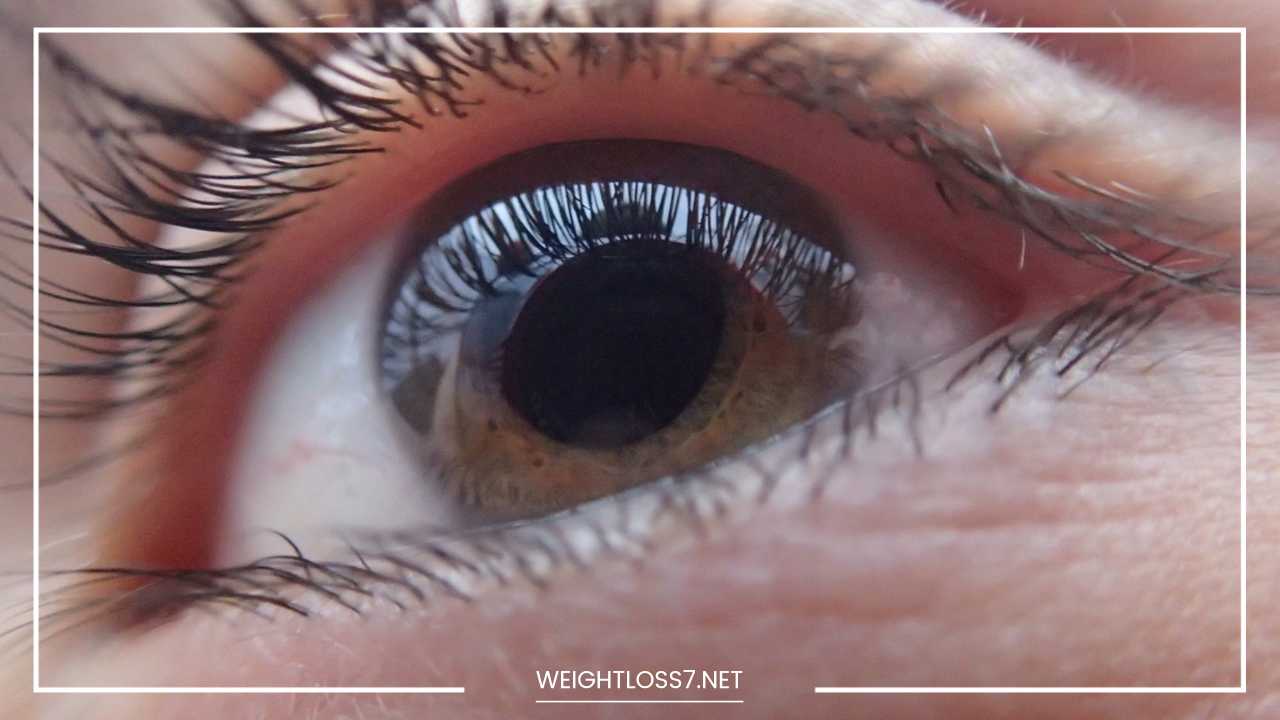Glaucoma: Silent Thief of Sight – Causes, Symptoms & Treatment

Glaucoma
Glaucoma: The Silent Thief of Sight
Glaucoma. The very name evokes a sense of mystery and fear. Often referred to as the “silent thief of sight,” glaucoma is a group of eye diseases that damage the optic nerve, the crucial connection between your eye and your brain. This damage, if left untreated, can lead to permanent vision loss and even blindness.
This comprehensive blog post aims to shed light on glaucoma, demystifying its causes, symptoms, and treatment options. By understanding this condition, you can take proactive steps towards protecting your precious gift of sight.
Unveiling the Eye’s Inner Workings
Before diving into glaucoma, let’s embark on a quick journey through the inner workings of the eye. This complex organ functions much like a camera, capturing the world around us and transmitting it to the brain.
Light enters through the cornea, the transparent dome at the front, and then travels through the pupil, the black circular opening in the center.
The lens then acts like a natural magnifying glass, focusing the light onto the retina, a light-sensitive layer at the back of the eye.
The retina is where the magic happens. It contains millions of photoreceptor cells, rods and cones, responsible for converting light into electrical signals.
These signals are then carried by the optic nerve, acting as the information highway, to the brain, where they are interpreted as the images we see.
The optic nerve plays a critical role in this process. It’s a bundle of millions of delicate nerve fibers, similar to an electrical cable with many wires.
These fibers are responsible for transmitting the electrical signals from the retina to the brain, allowing us to perceive the world visually.
Glaucoma: When the Pressure Builds
Now, let’s delve into the world of glaucoma. In healthy eyes, a clear fluid called aqueous humor nourishes the inner structures and helps maintain the eye’s shape.
This fluid is constantly produced and drained through a network of channels. Imagine it like a well-functioning irrigation system.
However, in glaucoma, this system malfunctions. The drainage channels become clogged, causing the aqueous humor to accumulate.
This increased pressure inside the eye, known as intraocular pressure (IOP), is the primary culprit in damaging the delicate fibers of the optic nerve.
Think of it like a balloon being inflated. As the pressure inside the balloon increases, it can stretch and eventually burst.
Similarly, high IOP can damage the delicate optic nerve fibers, leading to vision loss. While high IOP is a major risk factor, it’s important to note that not everyone with high pressure will develop glaucoma. Conversely, some people may have glaucoma with normal or even slightly elevated pressure.
Exploring the Different Forms of Glaucoma
Glaucoma isn’t a one-size-fits-all condition. There are several different types, each with its own cause and progression pattern. Here’s a closer look at the most common ones:
-
Primary Open-Angle Glaucoma (POAG): This is the most prevalent form of glaucoma, affecting millions worldwide. It develops slowly over time, often with no noticeable symptoms in the early stages. The drainage channels for aqueous humor become gradually blocked, leading to a rise in IOP and gradual damage to the optic nerve. Think of it like a slow leak in the irrigation system, causing pressure to build up steadily.
-
Angle-Closure Glaucoma (Acute Angle-Closure Glaucoma or Chronic Angle-Closure Glaucoma): In this type, the drainage channels become completely blocked, causing a sudden and severe rise in IOP. This can be likened to a complete blockage in the irrigation system, leading to a rapid increase in pressure. It can present with severe pain, redness in the eye, blurred vision, and nausea. Acute angle-closure glaucoma is a medical emergency and requires immediate treatment to prevent permanent vision loss.
-
Normal-Tension Glaucoma: This type of glaucoma presents a paradox. It occurs in individuals with normal or borderline IOP. The exact cause remains a mystery, but some theories suggest increased vulnerability of the optic nerve to even normal pressure levels. Imagine the optic nerve fibers being more fragile, susceptible to damage even with normal pressure.
-
Secondary Glaucoma: This form of glaucoma develops due to another underlying medical condition that damages the drainage system or the optic nerve itself. Some potential causes include eye injuries, inflammation, medications, and certain eye diseases. Think of it as another factor causing a blockage or weakness in the system, leading to pressure build-up or nerve damage.
Who is at Risk? Unveiling the Predisposing Factors
Certain factors can increase your risk of developing glaucoma:
-
Age: The risk of glaucoma increases significantly with age, particularly above 60. As we age, the drainage system can become less efficient, leading to pressure build-up.
-
Family History: Having a close family member with glaucoma puts you at a higher risk. It’s believed that there may be a genetic predisposition to developing glaucoma in some families.
-
Race: African Americans and Hispanics are at a higher risk for glaucoma compared to Caucasians. The reasons for this racial disparity are still being researched.
-
Medical Conditions: Certain medical conditions can increase the risk of glaucoma. These include:
- Diabetes: Diabetes can affect blood flow throughout the body, including the delicate blood vessels supplying the optic nerve.
- High blood pressure: While the link isn’t fully understood, uncontrolled high blood pressure may be a risk factor.
- Sleep apnea: This sleep disorder can cause brief interruptions in breathing, potentially affecting blood flow to the optic nerve.
-
Nearsightedness: People with severe nearsightedness (high myopia) are at a slightly higher risk. The reasons for this association are being investigated.
-
Previous Eye Injuries: Injuries to the eye, especially those that damage the drainage system or the optic nerve, can increase the risk of glaucoma.
-
Use of Corticosteroids: Long-term use of corticosteroid medications, particularly eye drops, can increase IOP in some individuals.
The Silent Thief’s Subtle Signs: Symptoms of Glaucoma
Glaucoma’s nickname, the “silent thief,” isn’t entirely accurate. While early-stage glaucoma often has no noticeable symptoms, some signs can appear as the disease progresses. Here’s what to watch out for:
-
Peripheral Vision Loss: This is a common symptom where you gradually lose your side (peripheral) vision. You may feel like you’re looking through a tunnel, missing things on the sides. Imagine reading a book and slowly losing sight of the words towards the edges.
-
Patchy Blind Spots: You may experience areas of vision loss within your central vision. These blind spots can appear and disappear or be constantly present. Imagine having small gaps in your vision, like missing pieces in a puzzle.
-
Sudden Vision Loss: This is a symptom of acute angle-closure glaucoma and requires immediate medical attention. You may experience a rapid and significant decrease in vision, often accompanied by pain.
-
Eye Pain and Redness: This is also associated with acute angle-closure glaucoma. The pain can be severe and accompanied by redness in the affected eye.
-
Seeing Halos Around Lights: This can occur in both open-angle and angle-closure glaucoma. You may see rainbow-colored halos or rings around bright lights.
Early Detection is Key: The Importance of Regular Eye Exams
Since glaucoma can develop without any noticeable symptoms in its early stages, regular eye exams are crucial for early detection and treatment. Early intervention can help prevent vision loss and maintain good vision quality.
Eye exams typically include a series of tests, such as:
- Tonometry: This test measures your intraocular pressure (IOP).
- Ophthalmoscopy: The doctor examines the inside of your eye, including the optic nerve, for signs of damage.
- Visual field test: This test assesses your peripheral vision to detect any blind spots.
Combating the Thief: Treatment Options for Glaucoma
There is currently no cure for glaucoma, but there are effective treatments available to manage the condition and prevent further vision loss. The specific treatment approach will depend on the type and severity of your glaucoma. Here’s an overview of some common treatment options:
-
Medications: Eyedrops are the most common form of treatment for glaucoma. They work by either reducing the production of aqueous humor or improving its drainage from the eye. Several different types of medications are available, and your doctor will determine the most suitable option for you.
-
Laser Treatment: In some cases, laser procedures may be used to create new drainage channels or widen existing ones, helping to lower IOP.
-
Surgery: If medications and laser treatment are not effective in controlling IOP, surgery may be an option. There are different surgical procedures available, each with its own benefits and risks.
Living with Glaucoma: Tips for Maintaining Good Vision
If you’ve been diagnosed with glaucoma, there are steps you can take to manage the condition and protect your vision:
- Follow your doctor’s treatment plan diligently. This includes taking medications as prescribed and attending regular follow-up appointments.
- Maintain a healthy lifestyle. Eating a balanced diet, exercising regularly, and getting enough sleep can all contribute to good overall health, which may benefit your eye health as well.
- Protect your eyes from injury. Wear protective eyewear when engaging in activities that could put your eyes at risk, such as sports or yard work.
- Manage stress. Chronic stress can sometimes contribute to fluctuations in IOP. Finding healthy ways to manage stress can be beneficial.
- Schedule regular eye exams. Even with treatment, regular eye exams are essential to monitor your condition and ensure the treatment plan remains effective. Early detection of any changes can help prevent further vision loss.
Living a Fulfilling Life with Glaucoma
A diagnosis of glaucoma doesn’t have to limit your life. With proper treatment and lifestyle modifications, you can continue to enjoy many activities and maintain a good quality of life.
The Future of Glaucoma Research
Researchers are constantly exploring new and improved ways to diagnose, treat, and potentially even cure glaucoma. Some promising areas of research include:
- Neuroprotective medications: These medications aim to protect the optic nerve from damage caused by glaucoma.
- Minimally invasive surgical techniques: Newer surgical procedures are being developed to offer less invasive ways to manage IOP.
- Gene therapy: Research is ongoing to explore the potential of gene therapy to address the underlying causes of glaucoma.
Final Word: Knowledge is Power in the Fight Against Glaucoma
Glaucoma is a serious eye disease, but with knowledge and proactive measures, you can take control of your eye health.
By understanding the risk factors, symptoms, and treatment options, you can empower yourself to protect your precious gift of sight.
Schedule regular eye exams, discuss any concerns with your doctor, and embrace a healthy lifestyle. Remember, early detection and treatment are key to managing glaucoma and preserving your vision for a lifetime.

















